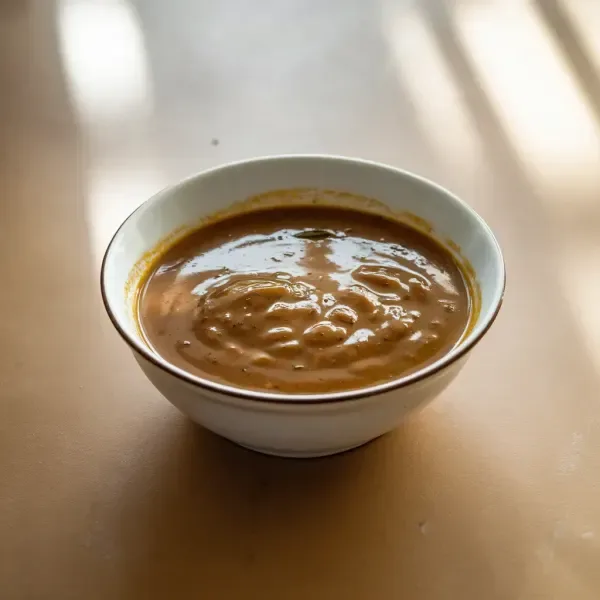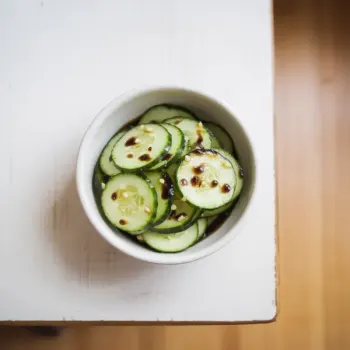
 10 minutes
10 minutesA rich and flavorful gravy made from the drippings of roasted meat, perfect for enhancing the taste of your roast.


Fat From Roast Drippings
tablespoons
Unbleached Flour
tablespoons
Broth Or Water
cups
to taste
to taste
1. Remove Roast and Prepare Drippings
Once your roast is done, carefully remove it from the pan and set it aside to rest. This allows the meat to reabsorb its juices, which makes for a tastier roast and better drippings.
2. Prepare Fat for Gravy
Pour or skim off the excess fat from your roast drippings, ensuring you leave about one tablespoon of fat in the pan. This fat is essential for creating a flavorful base for your gravy.
3. Make the Roux
Place the pan over a low flame and stir in one tablespoon of unbleached flour. Stir constantly for a few minutes until the mixture forms a golden paste. This roux will thicken your gravy and give it a rich, smooth texture.
4. Add Liquid and Thicken
Slowly add 1.5 cups of broth or water to the pan, whisking continuously. Adding the liquid gradually while whisking helps prevent lumps and ensures a smooth consistency. Keep stirring until the gravy mixture reaches a boil.
5. Season the Gravy
Once your gravy has thickened, season it to taste with salt and fresh-ground black pepper. Be mindful of the saltiness of your broth when adding additional salt. Taste as you go to ensure the seasoning is just right.
6. Strain if Necessary and Serve
If your gravy ends up lumpy, strain it through a fine-mesh strainer to achieve a smooth finish. Serve your gravy hot, drizzled over your roast or on the side.
Start with drippings from a well-seasoned, roasted piece of meat. Make sure the meat was roasted with aromatic herbs and vegetables like thyme, rosemary, carrots, and onions, as these will contribute to the complexity of your gravy.
Cook the roux until it reaches a golden-brown color to impart a nutty flavor to the gravy. Be patient and stir constantly to prevent burning. A proper roux is the backbone of a great gravy, providing both flavor and the thickening power.
Continuously taste and adjust the gravy as it cooks. Balance is key, so look for the point where the savory meatiness, seasoning, and acidity are in harmony.
After removing the roasted meat from the pan, deglaze the pan with a splash of wine, stock, or even water. Use a wooden spoon to scrape up all the browned bits (fond) from the bottom of the pan as these are packed with flavor.
Skim off excess fat from the drippings, but retain a few tablespoons to create a roux. Having the right balance of fat is essential to achieve a silky mouthfeel without an oily residue.




Comments (0)